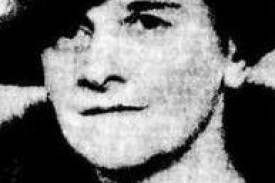General News
22 March, 2025
Veterans' Voices: Cora Elizabeth MacNeil
Cora Elizabeth MacNeil was born in Melbourne. Her next of kin was her mother, Mrs Hannah MacNeil of Kyallachy, Natimuk.

Cora’s occupation before enlisting was nurse and her home address was Natimuk.
Cora was single and her age on embarkation was 28 years.
She had seven months’ previous service as a nurse.
More than 2000 Australian women served overseas in the Australian Army Nursing Service (AANS) during World War I.
These courageous and dedicated women worked in difficult and sometimes-terrifying conditions.
They cared for patients in military clinics and hospitals near battlefields and on ships and trains.
Cora was one of these nurses who served overseas.
Cora’s rank on enlistment on March 5 1918 was staff nurse with Australian Army Nursing Service (AANS).
Her unit was Reinforcements AANS.
Cora arrived by train in Sydney on October 13 1918.
She embarked on HT Wyreena for service abroad the following day, October 14, with OC Troops (the total number of troops that mobilised during the war).
Cora disembarked at Cape Town, South Africa.
From the troop ship she was transferred to OC AIF Depot.
She departed Cape Town for demobilisation from AANS AIF on November 23 1918 at 3 MD.
Cora applied for her discharge and to be repatriated to Australia, England or another place.
She resigned from the AIF on December 8 1918.
For her service Cora received the 1914–15 Star, the British War Medal and the Victory Medal.
The Queenslander newspaper dated Saturday April 26 1919 reported:
Home-coming transports.
To arrive at rate of two per day. Repatriation staff’s big task.
The services of many large transports will be required this month to meet the proposed embarkation from the United Kingdom of about 40,000 Australians.
Already the Commonwealth authorities have received extensive lists of departures, and projected departures, of steamers carrying returning AIF men, and additions to the list are being notified.
For the fortnight ended April 3, 19 troopships were despatched for Australia, and before the end of the month an additional 20 will depart.
The transportation of Australian soldiers will prove a tremendous task, from the military point of view, and where shipping is concerned.
The chief of the staff wanted demobilisation all the Australian troops and they be enroute to their home ports before September and to do this they would use 300 large steamers.
Approximately two steamers will have to leave the United Kingdom for Australia daily between the beginning of April and the end of August.
At present troopships are reaching Australia at the rate of over one per day.
HT Wyeena was only one of many transport ships to take troops aboard and return them back to Australia at the end of the war.
Africa’s role in WWI
Africa was the setting for three campaigns during World War I: the German East Africa Campaign (1916–18), the East African Campaign (throughout the war) and the South African Overseas Expeditionary Force and German East Africa Campaign (1916–18).
The East African Campaign was a series of battles and guerrilla actions which occurred in German East Africa before spreading to areas within Portuguese Mozambique, Northern Rhodesia, British East Africa, the Uganda Protectorate and the Belgian Congo.
Britain was keen to deny the merchant raiders of the Imperial German Navy facilities on the Indian Ocean coast, as well as deny a base from which German land forces could conduct cross-border raids into neighbouring British or Allied colonies.
After a disastrous British Indian Army amphibious landing in November 1914 at Tanga, South Africa was requested by Britain to lead the campaign, defeat General Paul von Lettow-Vorbeck and occupy German East Africa.
The 1st and 2nd SA Mounted Brigades, the 2nd and 3rd SA Infantry Brigades, SA Field Artillery, and the Cape Corps fought in Imperial operations against German forces in German East Africa (now Tanzania) from January 1916 until the war in Africa ended on November 25 1918.
Their major battles were Salaita Hill, Kilimanjaro and Kondoa-Irangi in 1916; and Behobeho, Narungombe and Nyangao in 1917.
Cora post war
Sister Cora MacNeil became a night nurse superintendent at Alfred Hospital, Commercial Road, Prahran.
The Sydney Morning Herald of Saturday May 1 1937 reported she was appointed matron of the new Margaret Reid Home for Crippled Children in Sydney:
Sister MacNeil, who is a Victorian, arrived in Sydney last week and is staying with her brother Mr NH MacNeil, headmaster of Knox Grammar School Wahroongar.
Cora was formerly a sister tutor of the Austin Hospital, Heidelburg, Victoria, and she saw war service in South Africa and England.
She also spent a year at Oodadatta, Central Australia, as an Australian Inland Mission Sister in charge of a hospital there.
Upon her death, Cora Elizabeth MacNeil was buried in Springvale cemetery on July 8 1970.
Her remains are interred in Banksia Wall V Niche 74.
With thanks: Sally Bertram, RSL Military History Library. Contact Sally at sj.bertram@hotmail.com or call 0409 351 940.
